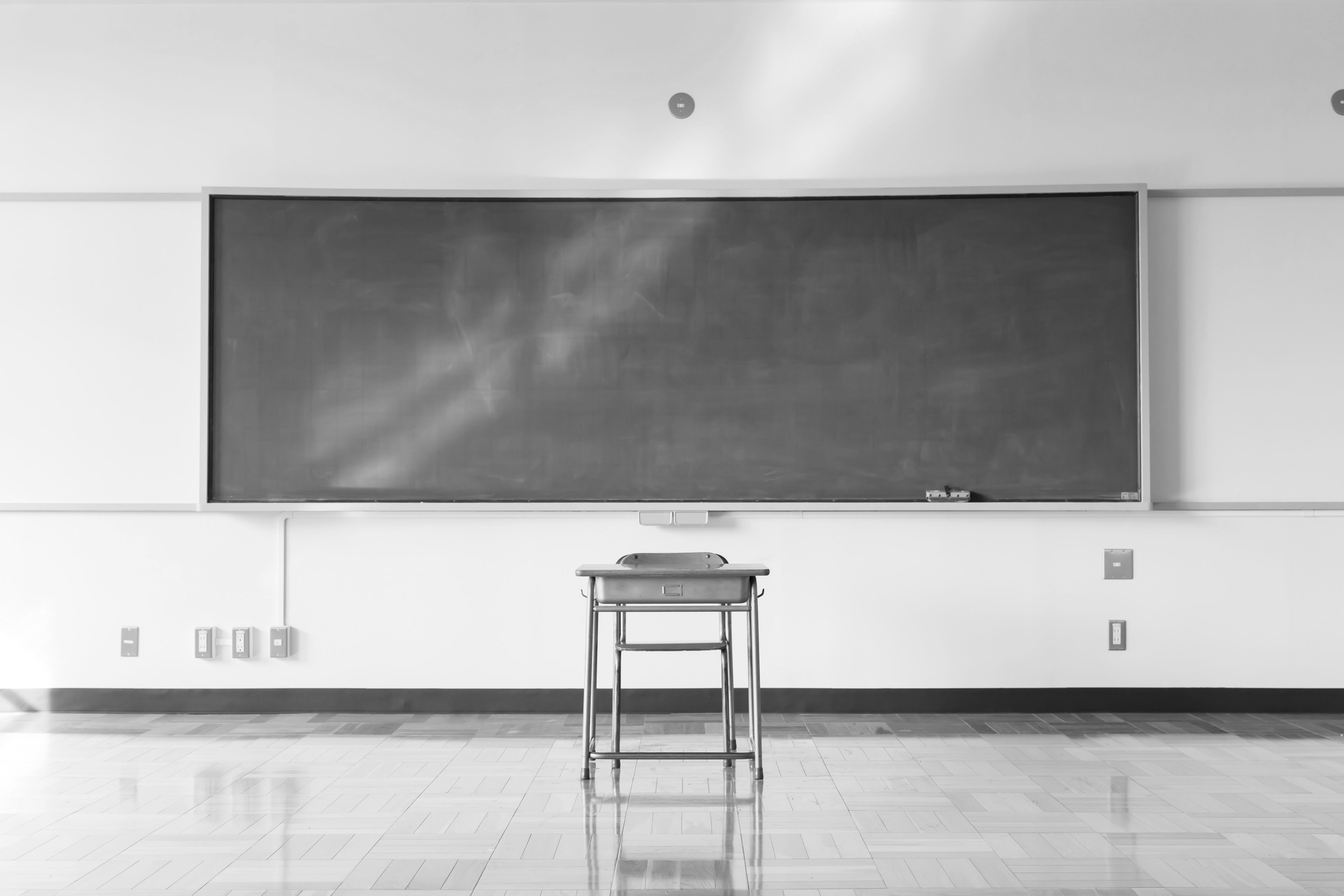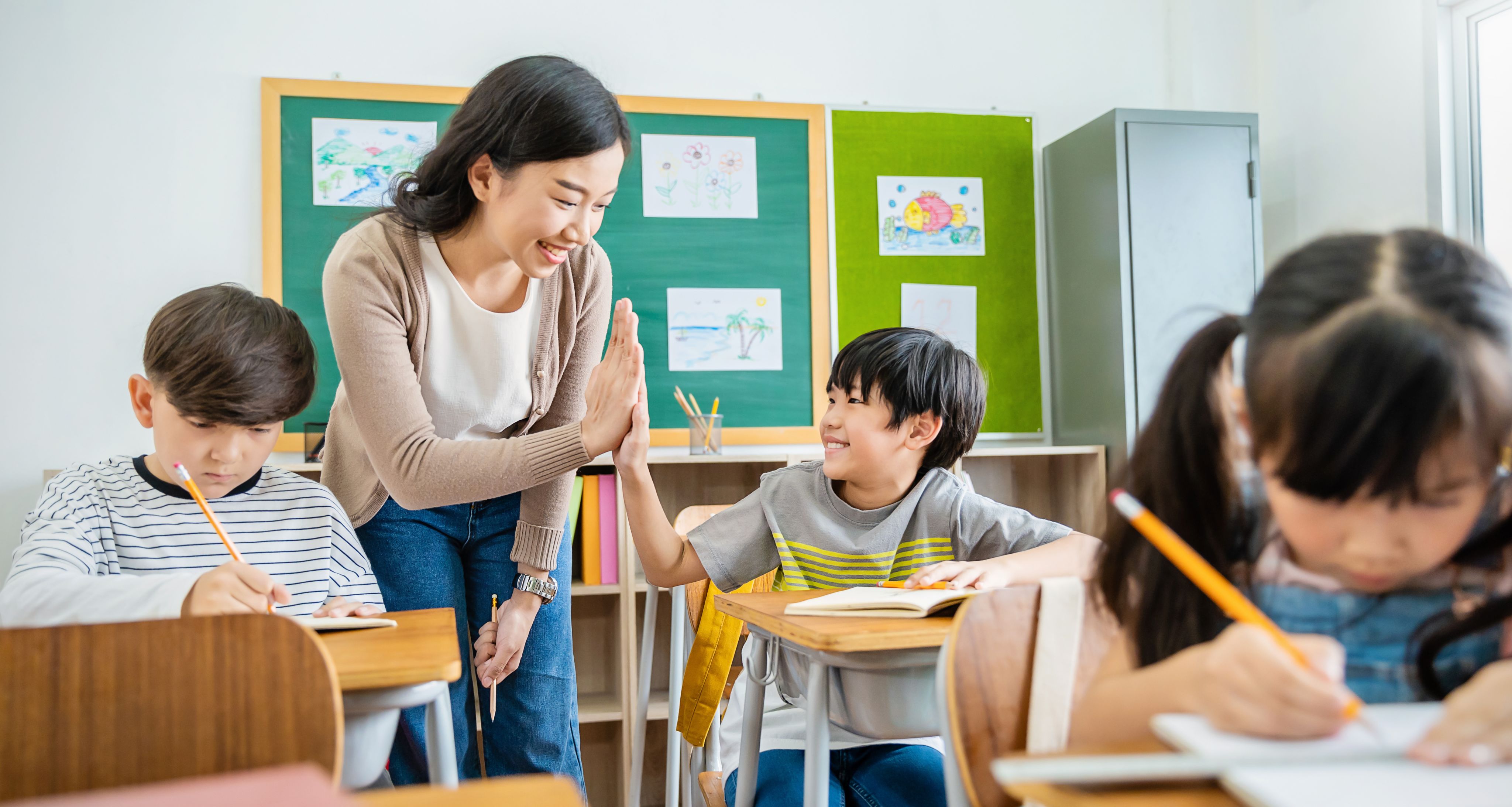Disrupting Common Narratives Around COVID-19 and “Learning Loss”


This online learning module is designed to explore the multifaceted impact of the COVID-19 pandemic on education. As educators, understanding the complexities of this unprecedented crisis is crucial for effectively supporting our students in navigating these challenging times. Throughout this module, we will delve into key issues such as teacher vacancies, enrollment disparities, and the deconstruction of common narratives surrounding pandemic-related learning challenges. By examining these topics through a critical lens, we aim to equip educators with the knowledge and insights needed to address the evolving needs of our students and communities.
This module consists of a pre-recorded session, as well as the online components found below.
The Effects of the Pandemic
This online learning module is designed to explore the multifaceted impact of the COVID-19 pandemic on education. As educators, understanding the complexities of this unprecedented crisis is crucial for effectively supporting our students in navigating these challenging times. Throughout this module, we will delve into key issues such as teacher vacancies, enrollment disparities, and the deconstruction of common narratives surrounding pandemic-related learning challenges. By examining these topics through a critical lens, we aim to equip educators with the knowledge and insights necessary to address the evolving needs of our students and communities.
Teacher Vacancies
The effects of the COVID-19 pandemic have reverberated throughout the educational landscape, and it is crucial for educators to understand these impacts. One significant consequence has been the surge in teacher vacancies, particularly pronounced in special education and elementary positions. Data from 2021 revealed that a staggering 40% of public schools faced challenges in filling openings for special education positions. This shortage is exacerbated by a broader trend: between 2012 and 2019, enrollment in traditional teacher preparation programs dwindled by a worrying 30%.
The effects of the COVID-19 pandemic have reverberated throughout the educational landscape, making it crucial for educators to understand these impacts:
The biggest effect is in special education and elementary positions.
40% of public schools hiring in 2021 had difficulty filling openings for SPED positions.
Between 2012 and 2019, enrollment in traditional teacher prep programs decreased by 30%.
Irwin, V., Wang, K., Tezil, T., Zhang, J., Filbey, A., Jung, J., Bullock Mann, F., Dilig, R., and Parker, S. (2023). Report on the Condition of Education 2023 (NCES 2023-144). U.S. Department of Education. Washington, DC: National Center for Education Statistics. Retrieved [date] from https://nces.ed.gov/pubsearch/pubsinfo.asp?pubid=2023144.
Enrollment
Enrollment trends offer another window into the pandemic's educational impact, with notable declines observed in pre-kindergarten and kindergarten cohorts. These declines correlate with income levels and parental educational attainment, emphasizing the intersectionality of educational access. For instance, between October 2019 and October 2020, five-year-old enrollment plummeted by 5%, while three to four-year-olds experienced a staggering 13% drop. Alarmingly, Emergent Bilingual/Multilingual enrollment bore a disproportionate brunt, declining by 2.1% for kindergarten compared to other grades (Condition of Education 2023). As emphasized by health experts, early childhood development and education serve as fundamental determinants of future health and well-being, underscoring the urgency of addressing these enrollment disparities.
Here's a breakdown of the enrollment changes observed between October 2019 and October 2020:
5-year-old enrollment fell 5% between October 2019 and October 2020 .
3–4-year-old enrollment fell 13%.
Enrollment rate rose for families with parents with bachelor's degrees and higher incomes.
Emergent Bilingual enrollment fell disproportionately by 2.1% for kindergarten compared to other grades.
Irwin, V., Wang, K., Tezil, T., Zhang, J., Filbey, A., Jung, J., Bullock Mann, F., Dilig, R., and Parker, S. (2023). Report on the Condition of Education 2023 (NCES 2023-144). U.S. Department of Education. Washington, DC: National Center for Education Statistics. Retrieved [date] from https://nces.ed.gov/pubsearch/pubsinfo.asp?pubid=2023144.



Deconstructing Common Narratives of Pandemic-Related Learning Challenges

Why Don’t We Use the Term ‘Learning Loss’?
One prevalent narrative suggests that children can easily "bounce back" from pandemic disruptions with the right interventions. However, this narrative overlooks systemic issues and assumes that students' experiences can seamlessly revert to pre-pandemic norms. Such assumptions neglect the diverse challenges students face and undermine the need for systemic changes in education, including Individualized Education Program (IEP) evaluations and referrals. Instead of expecting students to passively "bounce back," educators must acknowledge and address the underlying issues hindering their progress.
Deficit Framing
Frames learning through the logic of testing.
Positions solutions that are individualized and behaviorist.
Ignores learning experienced through informal experiences.
Privileges learning through standardized/resourced methods.
Three Common Narratives Associated with COVID-Related Learning Loss
Children Can Bounce Back
In this section, we will examine the assumption that children can easily recover academically with the right interventions. We will discuss how this narrative overlooks systemic issues and assumes a return to pre-pandemic norms.
The Evidence (Data) Points to Learning Loss
Throughout this narrative, we will understand the reliance on standardized test scores as the (Data) Points to Learning Loss primary evidence of learning loss. We will explore how this narrative ignores broader factors such as healthcare access and systemic inequities.
Federal Relief Money Alone Will Rectify Challenges
This section will reveal the assumption that federal relief money is sufficient to solve all pandemic-related educational challenges. We will discuss how it overlooks the need for systemic changes and sustained efforts.
Children can Bounce Back
Implicit Assumptions: In the aftermath of the COVID-19 pandemic, one prevailing narrative offers a glimmer of hope: children can bounce back. This narrative, rooted in optimism, suggests that with the right interventions, students can effortlessly regain any lost ground in their academic journey. However, beneath this hopeful facade lie implicit assumptions that warrant closer examination.

Quick Fix Solutions: The belief that applying the correct intervention will lead to swift recovery overlooks the complexity of the challenges students face. Learning is not a one-size-fits-all solution but rather a nuanced journey requiring multifaceted support.
Return to Normalcy: Implicit in this narrative is the assumption that students' post-pandemic reality can seamlessly mirror their pre-COVID experiences. However, the lived experiences of students during the pandemic have reshaped their perspectives and needs, necessitating a reevaluation of what "normal" means in education.
Adapting to Broken Systems: This assumption places the burden of adaptation solely on students, rather than addressing systemic issues within the education system itself. Students should not be expected to conform to broken systems but rather deserve environments that support their diverse needs and experiences.
Unequal Effort: The notion that students who experienced the most learning loss must simply work harder overlooks the systemic barriers and inequities that exacerbate these disparities. Efforts to support student recovery must be equitable and address the root causes of educational inequity.
Blaming the Individual: When students fail to "bounce back" on schedule, this narrative often attributes their struggles to cultural, familial, or personal deficits. Such assumptions overlook the systemic factors at play and perpetuate harmful stereotypes about certain communities.
Examining Our Beliefs
Supporting Structural Change: Instead of focusing only on students' personal qualities like grit, educators must advocate for changes that remove structural barriers to success, ensuring equitable opportunities for all learners.
Addressing Root Issues: Rather than applying quick fixes, educators should confront systemic inequities that cause educational disparities, prioritizing fairness and justice in their approach.
Tailoring Support: Assessments like Individualized Education Program (IEP) evaluations provide valuable insights into students' needs. By using these assessments, educators can customize support services to meet each student's requirements, creating a more inclusive learning environment.
Innovating for Equity: Pedagogical innovations, especially those focusing on marginalized students, are crucial. Educators can use inclusive teaching methods and technology to create engaging learning experiences that empower every student.
Recognizing Ongoing Challenges: The pandemic's effects are still felt in our education system. Acknowledging this reality is vital for implementing long-term solutions that meet the changing needs of students and communities.
The Evidence (Data) Points to Learning Loss
In the discourse surrounding the educational impact of the COVID-19 pandemic, a prevalent narrative emerges: the evidence points to learning loss. This narrative, steeped in deficit language, emphasizes the perceived decline in academic achievement among students during the pandemic. However, a closer examination reveals the limitations and biases inherent in this framing.

Deficit Language:
Negative Framing: The language used in discussions of learning loss often paints a bleak picture, focusing on what students have lost rather than acknowledging their resilience and adaptability. Terms such as "learning loss" imply a deficit, overshadowing the diverse learning experiences and strengths of students.
Systemic Data Ignored:
Healthcare: Beyond academic achievement, the pandemic has had profound implications for students' physical and mental health. Disruptions to healthcare access, increased stress and anxiety, and trauma from loss and isolation are among the myriad challenges students have faced, yet these factors are often overlooked in discussions of learning loss.
Social-Emotional Supports: The importance of social-emotional well-being in academic success cannot be overstated. Yet, systemic data on the availability and effectiveness of social-emotional supports, such as counseling services and mental health resources, are frequently sidelined in discussions of learning loss.
Systemic Inequity: The pandemic has exacerbated existing disparities in educational opportunity, particularly along lines of race and socioeconomic status. Systemic inequities in access to technology, quality instruction, and support services have widened the achievement gap, yet these systemic factors are often glossed over in discussions of learning loss.
Implicit Assumptions:
Test Scores as Sole Measure: Implicit in the narrative of learning loss is the assumption that standardized test scores accurately reflect students' overall learning and academic growth. This narrow focus on quantifiable outcomes overlooks the richness of learning experiences that cannot be captured by traditional assessments.
Absence of Knowledge Gain: Another implicit assumption is that no knowledge was gained during the pandemic disruptions. This overlooks the resilience, creativity, and adaptability demonstrated by students and educators in navigating unprecedented challenges and finding new ways to learn.
Quantifiable Evidence Bias: There is a bias towards quantifiable evidence in discussions of learning loss, while other markers of student growth and development are deemed less valid. This narrow definition of evidence overlooks the holistic nature of learning and fails to capture the full range of student experiences and achievements.
Subject Prioritization: The narrative of learning loss often prioritizes certain subjects, such as math and reading, over others, neglecting the importance of a well-rounded education. This perpetuates the narrow focus on standardized testing and overlooks the value of diverse learning experiences in fostering student success.
Test Scores as Recovery Indicator: The assumption that improved test scores will serve as evidence of recovery overlooks the multifaceted nature of student learning and the systemic barriers that may impede academic progress. A narrow focus on test scores fails to address the underlying issues contributing to educational disparities and inequities.
While discussions of learning loss may highlight important challenges facing students and educators, it is essential to interrogate the deficit language, biases, and omissions inherent in this narrative. By broadening our understanding of student learning and success and addressing systemic inequities, we can create more inclusive and responsive educational systems that support the diverse needs and experiences of all learners.
Federal Relief Money Will Fix It
In the wake of the COVID-19 pandemic, federal relief money has been touted as a panacea for the myriad challenges facing our education system. This narrative suggests that ample funding will enable schools to implement effective strategies for pandemic-related learning recovery. However, a closer examination reveals underlying assumptions and gaps in this approach.

Biggest Gaps on Perceived "Return on Investments":
After-School and Summer Learning Programs:
While these programs are often touted as effective strategies for learning recovery, there are significant gaps in their perceived return on investment. Limited access, lack of transportation, and inequitable distribution of resources may hinder their effectiveness, particularly for marginalized communities.
Remedial Instruction:
Despite its widespread adoption, remedial instruction may fail to address the underlying systemic issues contributing to learning loss. Without systemic reforms and targeted support for marginalized students, remediation efforts may only scratch the surface of the problem.
Addressing the Root Causes:
Systemic Solutions: Additional hours of learning, whether through after-school programs or remedial instruction, are unlikely to fix the problem if the underlying systemic issues remain unaddressed. Meaningful change requires a comprehensive approach that tackles inequities in access, resources, and opportunities.
Conclusion:
While federal relief money has the potential to alleviate some of the challenges facing our education system, it is not a panacea. To truly address the root causes of learning loss and inequity, we must prioritize systemic reforms, targeted interventions, and a commitment to equity and justice. By investing in our students, educators, and communities, we can build a more resilient and equitable education system for generations to come.

Who is Gholdy Muhammad?
Gholdy Muhammad (2024) is an esteemed educator, scholar, and author of "Unearthing Joy: A Guide to Culturally and Historically Responsive Curriculum and Instruction" Her work focuses on creating educational experiences that are inclusive, equitable, and joyful. Muhammad's framework provides valuable insights for educators seeking to reconnect with their passion for teaching in the post-COVID era.
Muhammad, G. (2024). Unearthing Joy: A Guide to Culturally and Historically Responsive Curriculum and Instruction. Scholastic.
Understanding Joy in Education
Gholdy Muhammad's framework, outlined in her book "Cultivating Genius: An Equity Framework for Culturally and Historically Responsive Literacy," and expanded in her subsequent work, is designed to create educational experiences that are inclusive, equitable, and empowering. Her framework is built on five interconnected components: Identity, Skills, Intellect, Criticality, and Joy. Identity focuses on helping students understand themselves and their cultural backgrounds, fostering a sense of belonging and self-awareness. Skills emphasize the development of academic abilities and competencies essential for success. Intellect involves nurturing students' intellectual capacities and critical thinking skills by engaging with challenging and meaningful content. Criticality encourages students to analyze and question societal norms and injustices, promoting social consciousness and activism. The addition of Joy highlights the importance of creating a learning environment where students find pleasure and inspiration in their educational journey. By integrating these five components, Muhammad's framework aims to cultivate genius in all students, creating a learning environment that is not only academically rigorous but also culturally and historically responsive, ultimately leading to a more joyful and impactful educational experience.
Joy in education goes beyond simply having fun; it involves creating meaningful, engaging, and empowering learning experiences for both students and teachers. According to Muhammad, joy is a critical component of education that enhances motivation, engagement, and academic success. Rediscovering joy in teaching involves fostering a positive classroom environment where both educators and students can thrive.
By focusing on these components, educators can create a curriculum that is relevant, inclusive, and engaging for all students. Implementing this framework helps students see themselves in their learning, which fosters a deeper connection and joy in the educational process.
Reconnecting with Students
Post-COVID, it is essential to rebuild relationships with students by understanding their diverse experiences during the pandemic. Strategies include:
Holding open discussions about their experiences and feelings.
Creating a supportive and inclusive classroom environment.
Using culturally responsive teaching practices to make every student feel valued and understood.
Reconnecting with students on a personal level helps create a joyful and trusting classroom community.
Cultivating Professional Joy
Reflecting on personal and professional growth during the pandemic can help educators find joy in their work. Strategies for cultivating professional joy include:
Prioritizing self-care and well-being.
Engaging in professional development that aligns with personal passions.
Building a supportive network with colleagues to share experiences and strategies.
A focus on self-care and professional growth is essential for maintaining joy and resilience in teaching.
Engaging Curriculum and Pedagogy
Designing an engaging curriculum that incorporates students' interests and voices is key to fostering joy in the classroom. Examples include:
Integrating culturally relevant materials and topics
Encouraging student-led projects and discussions
Using Muhammad’s framework (2024) to create lessons that develop Identity, Skills, Intellect, and Criticality.
By making learning meaningful and relevant, educators can ignite a passion for learning in their students.
Embracing Flexibility and Innovation
The pandemic taught us the importance of flexibility and innovation in education. Moving forward, educators can:
Incorporate technology and digital tools to enhance learning.
Embrace hybrid teaching models that offer flexibility.
Encourage creative problem-solving and adaptability among students.
These practices not only improve educational outcomes but also keep teaching fresh and exciting.
Moving Forward with Joy
As we move forward, it is important to set goals for maintaining joy in teaching. Consider:
Setting both personal and professional goals related to well-being and growth.
Continuing professional development with a focus on equity and culturally responsive practices.
Celebrating successes and milestones with students and colleagues to foster a positive and supportive educational community.
Section recap: Rediscovering joy in teaching after COVID-19 involves reconnecting with students, reflecting on personal growth, and embracing innovation and flexibility. Gholdy Muhammad’s framework provides a valuable guide for creating joyful, inclusive, and effective educational experiences.
Conclusion
As we conclude this module, it's evident that the repercussions of the COVID-19 pandemic extend far beyond the confines of the classroom. From teacher vacancies to enrollment declines and the nuances of pandemic-related learning challenges, educators face a myriad of complex issues. However, armed with a deeper understanding of these challenges and a commitment to equity and innovation, we can forge a path forward. By embracing collaboration, creativity, and compassion, we have the power to create learning environments that not only support academic growth but also foster resilience and well-being in our students. Together, let us embark on this journey of transformation, guided by the belief that every student deserves an education that empowers and inspires.



















